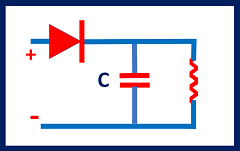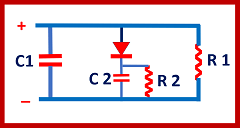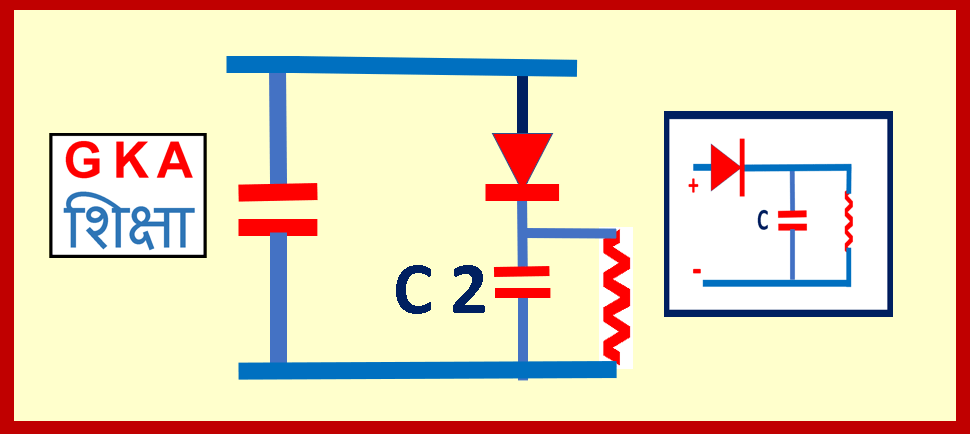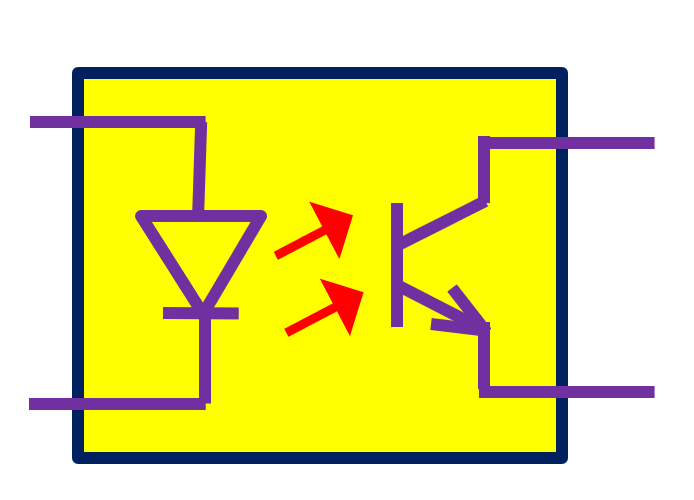There are many applications of the diode in electronic and electrical circuits. In this technical article, we will discuss a few applications of the diode in electrical and electronic circuits. You also get extra knowledge as per industrial design experience.
We will discuss the 18 main applications of the diodes here.

Applications of the diode
There are many applications of the diode in AC to DC supply, electronics, electrical, circuits, and protection. A few applications of the diode are as follows :
- Diode finds its use extensively in the bridge rectifiers for converting AC into DC. Diode is used in both full-wave rectifiers and as well as in half-wave rectifiers. The rectifier converts the AC supply into the DC supply.
- Another application of diode is in free wheeling diode in DC relay and BJT transistor circuits. This diode prevents the high voltage during the switching “OFF” of the relay. The current flowing in the coil of the relay flows through the diode during the switching-off operation of the relay.
- The diode is also used in the SMPS supply to limit the high-voltage spikes during switching off the electronics.
- A few applications of the diode are in logic gate circuits. We can make simple “AND” and “OR” logic gates using a few diodes and resistors.
- Another application of a diode is to protect electronic circuits from the reverse polarity connection of the input DC supply. This arrangement provides very good protection from the wrong connections in the wiring. Refer to Figure 1.
- The diode can limit the high input over-voltage coming at the CMOS IC circuit. In this case, we connect the diodes between the input terminal of the CMOS IC and the power supply with a resistor in the series.
- The two diodes in antiparallel connected between the positive and negative input of the linear IC protect the linear operational amplifier. This is especially applicable in comparator mode or during input signals of more magnitude.
- We connect the diode in reverse at the base of the BJT transistor to protect the BJT from negative input voltage if any.
- The diode finds uses in protecting solar cells also. The diode in reverse across solar cells protects the solar cell from current flowing in the cell during the absence of sunlight in some particular solar cells. This is important when many cells are connected in the series.
- We use the diode in a voltage-doubling circuit. This helps in getting double the DC voltage than possible using only rectifiers. We use a diode in this arrangement for voltage surge generation applications for testing purposes.
- We can generate 0.7 volts DC for reference in electronic circuits. A resistor and a diode in series do the work.
- The diode along with the resistor and capacitor can generate a pulse of short duration to trigger the JK flip flop etc in electronic circuits. We get the short-duration pulse during the rise or fall time of the square wave.
- We connect a diode in parallel in reverse across IGBT and MOSFET to protect the power devices from the reverse voltage. It also provides the bypass path for the reverse current flow in the inverter or in the AC to DC circuits in VFD circuits.
- The diode can clip the input voltage in clipping circuits in electronics.
- The diode is useful in getting redundancy in the DC power supply. We connect two DC supplies together with the help of the two diodes to supply a single load. In case of failure of one DC supply, the other DC supply supplies the necessary current to the circuit immediately. This improves the reliability of the system.
- The diodes also find application in the flip-flop circuit made using the BJT transistors.
- The diode also finds use in analog demodulation circuits.
- One of the applications of the diode is in the reserve DV supply for the thyristor gate circuit.
Further, read an exclusive use of the diode in the next para as per experience.
Extra knowledge as per experience – Reserve DC supply
In this part, I explain one of the special applications of the diode, as a reserve DC supply. This is an exclusive application in case of the limited availability of DC supply as in HVDC thyristor gate circuits.
Applications of the diode in reserve DC supply
Refer to the circuit as per the figure 2 below. The DC supply at the input of the circuit will charge the capacitors C1 and C2 both.

If the DC supply fails, then R2 gets electric current from capacitors C1 and C2. While main load R1 gets current from the capacitor C1 only. The capacitor C1 will discharge after some time due to heavy load R1.
However, capacitor C2 supplies the current only to the resistor R2. This is a reserve supply for the load resistor R2. The capacitor C2 supply is reserved only for load R2 and not load R1.
This is useful when the load R2 requires a small current and is critical in nature.
The above concept was used by me to trigger the thyristor. The current for the gate of the thyristor would be drawn from the capacitor C2.
The reason is that the thyristor will fail if the gate current is withdrawn (due to failure of the DC supply) before the thyristor triggers properly. The gate current should be withdrawn after the thyristor has been triggered properly.
The gate current of the thyristor must have sufficient magnitude and also sufficient time depending on the applications. Improper gate current is one of the main reasons for the failures in the thyristor.
For a very detailed understanding along with circuit diagrams, watch the video (but in Hindi):
Also, watch the Zener diode in series and parallel.
Further, read applications of the Zener diode.
Also, read the Neutral wire voltage
.Further reas, AC or DC supply danger level.
Also, see metal oxide varistor.
Further, read on MCB and RCCB breaker difference.
I hope that you enjoyed reading the article on the applications of the diode.
If so, then subscribe to my YouTube channel.
About the author – G K Agrawal B.Sc and B.Tech (from HBTU Kanpur), Retd. Sr DGM Design (BHEL), the inventor of patents, has lifelong industry experience in the electrical and electronics design field of R&D. He worked for BHEL. He shares his experience and knowledge on blogs and YouTube. Read the profile here.




Very good article.
Very good.
Thanks